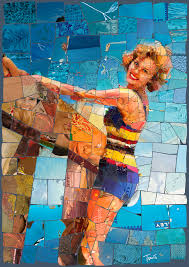
The collage tradition has evolved dramatically in the digital age. Artists now seamlessly combine photography, scanned textures, vector art, and hand-drawn sketches into unified compositions. With software like Photoshop, Procreate, and Blender, they craft visual narratives that defy conventional formats.
This rise of digital collage reflects a broader movement toward storytelling through layers — both literal and symbolic. Artists piece together fragmented realities, comment on identity, or remix cultural motifs. Whether surreal, political, or playful, their work thrives on contrast and juxtaposition.
Many illustrators find freedom in this hybrid approach. They’re not confined by paper, glue, or paint. Instead, they cut and paste memories, influences, and internet culture into new forms. The result is a wave of bold, textured artworks—used in everything from album covers to editorial design.
What makes this trend stand out is its accessibility. Anyone with a smartphone or tablet can experiment. This democratization is fueling a vibrant online community where boundaries between amateur and professional blur. Digital collage is more than technique—it’s an expression of how we absorb, remix, and reconstruct the world around us.